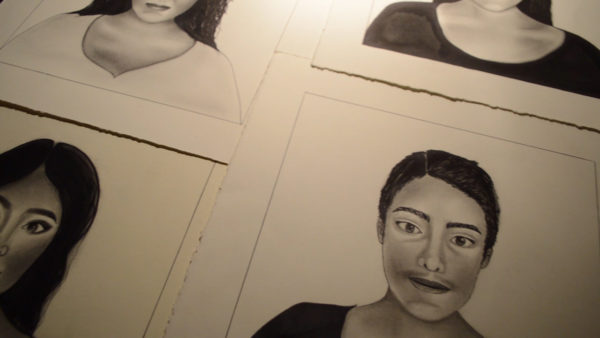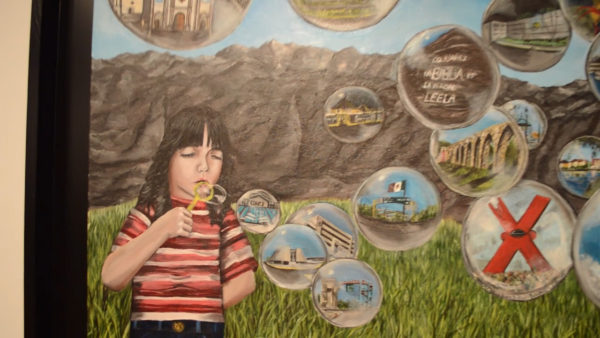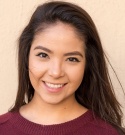EL PASO – As a child at the beginning of the new millennium, Ana Carolina’s city was notorious as a place where hundreds of women went missing. Now a student at UT El Paso, the theme of empowering women is at the core of many of Carolina’s works. For Carolina and other young artists from Ciudad Juarez, art has become a way to process and escape from the ugly reality of the drug wars and other violence that surrounded them growing up.
“The disappearance of so many young women is something that really characterized Ciudad Juarez, so I think that really influenced my art a lot,” Carolina said. “I draw women and something that represents them is that they are all facing forward and looking straight at you. My women are strong; we are not just a symbol of sexuality or sensuality in the arts.”

Drawings of women by Ana Carolina
Carolina also uses her art to express the cultural beauty that characterizes this region where Mexico and Texas connect.
“How would my day be if I didn’t see the Tarahumaras, they are icons of Ciudad Juarez. Something that always catches my attention is that their clothing is always very vivid and they represent the colors and culture of Mexico.”

Amor Por Juarez by Paloma Vianey
Fellow UTEP art student Paloma Vianey’s inspiration to paint began in 2011 during the height of the violence in Juarez. From there, her piece “Amor Por Juarez” was created, which contains the most iconic places of the frontier city.
“It did not matter how bad violence was in my city, I wanted to create it into something positive. Other than that, that painting symbolizes the moment when I decided that I wanted to be a painter and that was what I wanted to do for the rest of my life,” Vianey said.
While both artists early lives were shaped in Juarez, their work transcends the border and brings a broader perspective to the art program at this Texas university, said Melissa Barba, assistant director of the Gerald and Stan Lee Rubin Center art gallery.
“It is such a rich opportunity for two cultures, two communities, two countries to come together in a very seamless way. A good majority of our student population here is from Ciudad Juarez and I think it enriches the conversation at so many levels in the academia. You are talking about art in politics, in literature, and you have completely different perspectives.”
For Carolina and Vianey, as they develop their own style of art and creativity they also look forward to bringing back to Juarez the color and hope that faded during the troubled times.

